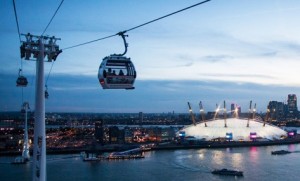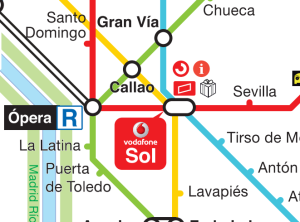
Fuel the Gap – Evaluating Public Transport Sponsorship
9th January, 2014
The rather abrupt end to Barclays intended 8 year partnership with London’s cycle hire scheme has amplified the vehemently contested debate surrounding public transport sponsorship. With rumours circulating as to why the Barclays sponsorship deal has been halted, it poses the question – is there value in public transport sponsorship?
According to a recent poll, 82% of Londoners support an increase in sponsorship across the public transport sector – this statistic seems even more surprising when you realise that the poll included the acquisition of naming rights for tube stations. Public support aside, it seems that brands are taking to the idea. Samsung recently trialled a month-long partnership with Madrid’s ‘Puerta del Sol’ Metro Station (more info) – a partnership which was then acquired by Vodafone to become ‘Vodafone Sol’ after the telecoms giant purchased the naming rights for a reported 1 million Euro a year deal, to the dismay of many Madrilenians.
There’s no doubt that this sponsorship has been effective in generating an additional revenue stream, one that has been crucial for the cash-strapped Spanish transport authority. A similar approach in London would almost single-handedly allow the cap on fare increase which we, the general public, so desperately crave. Yet despite the benefit for the general public, it is sometimes hard to find the true value for sponsors in the public transport industry. To demonstrate this, one need look no further than London Transport’s other high profile sponsorship deal, The Emirates Air Line.

The project was originally billed as an entirely self-financing transport link for commuters and tourists alike costing £25 m; but by the time of completion this had risen dramatically to £63 m.
Whilst Boris Johnson’s enthusiasm for one of his signature projects continues, it would be surprising to hear such continued positivity from Emirates. If recent usage figures are anything to go by, it is difficult to see where Emirates can draw any positives from their association. Statistics show that the transport link is running at an average capacity of around 1 %. Despite this monumental drop, during 2012 the Emirates Air Line was one of London’s premier tourist attractions and generated a vast amount of exposure for the company. Short-term successes aside, surely when Emirates put pen to paper on the 10 year deal, they were hoping for more long-term rewards rather than the ‘flash in the pan’ success they received.
So as a sponsorship campaign, what does the future hold for The Emirates Air Line and is there any danger of Emirates ‘doing a Barclays?’ If Boris thought Emirates got him out of a hole with the shortfall, then in more recent times they have landed him in another one, with the much-publicised controversial contractual details that was implemented by the UAE. The contract appeared to exclude Israel from business with TFL. In some peoples’ eyes, what was once a popular tourist attraction has now become a symbol of hatred towards Israel.
Industry trends suggest that creative and selective campaigns often out-trump heavy-handed broadcast branding. This is not to say, however, that every project of this scale in the public transport industry is doomed for failure, it just suggests that the industry needs to develop. If the industry can learn anything from the Emirates/TFL partnership it is that brands contemplating putting their name on a public transport project should be aware of the challenges ahead. Perhaps brands would be better off targeting tried and tested transport models on a smaller-scale with an increased emphasis on engagement.



